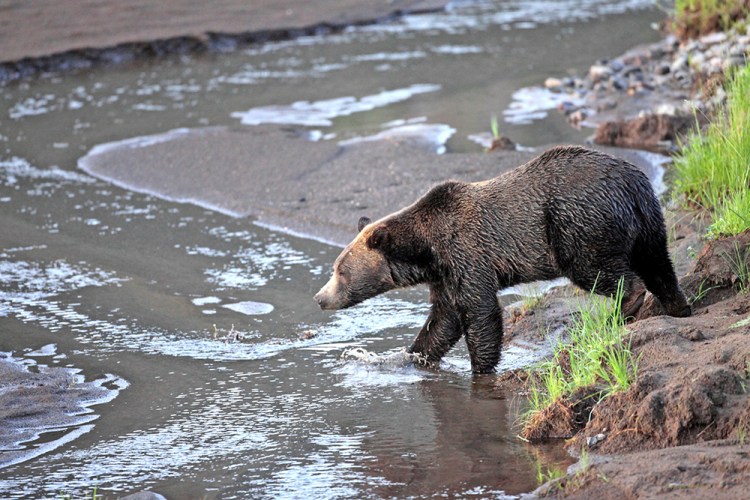HELENA, Mont. — Hunters soon could be chasing grizzly bears across the ridges of the Rocky Mountains, leaving three states to come up with plans to ensure the iconic species won’t be snuffed out so soon after recovering from threats to their survival.
The Obama administration in March proposed lifting protections for the more than 700 grizzlies around Yellowstone National Park. The bears have been considered a threatened species since 1975, but wildlife officials say their population has sufficiently recovered to turn over management to Wyoming, Montana and Idaho.
Other grizzly populations in Montana, Idaho and Washington state will remain protected. The grizzlies’ Alaska cousin, the brown bear, is not considered a threatened or endangered species and is hunted regularly.
Before the U.S. Fish and Wildlife Service makes a final decision on Yellowstone grizzlies by March 2017, it is requiring those states to outline what their grizzly bear hunting seasons would look like. The scrutiny is intense, with wildlife advocates insisting the bear population is still too fragile for hunting and that federal officials reverse course before it’s too late.
One advocacy group, Defenders of Wildlife, is worried the federal government is moving too quickly and should delay making a final decision until the states’ plans to manage the species have been completed and fully vetted.
“All the work of bringing back the grizzly bear from the brink of extinction should not go up in smoke because the game plan is substandard,” said Jamie Rappaport Clark, the organization’s president and CEO, and a former director of the fish and wildlife service.
Amid all the attention, the three states are coordinating their efforts, the first time they have planned to manage a species together, officials said.
“This is a historic undertaking because we don’t manage any other species like this,” said Idaho Department of Fish and Game spokesman Gregg Losinski.
They’ve apportioned the bears that could be killed through hunting according to their share of the Yellowstone area within their boundaries – Wyoming with 58 percent, Montana at 34 percent and Idaho at 8 percent. The actual quota of grizzlies available for each state’s hunt would vary from year to year, depending on the previous year’s bear deaths, but Montana officials estimated their number would be less than 10 bears in most years.
If the total Yellowstone grizzly population drops below 600, hunting would stop except in cases of threats to human life, according to the states’ agreement.
Montana plans to release its outline for hunting regulations on Thursday for public comment. It includes measures such as limiting hunting seasons to times when most females and their young will still be in their dens, and forbidding killing any bear that is with other bears. The number of licenses issued would total the state’s bear quota for the year.
Fish, Wildlife and Parks Director Jeff Hagener emphasized Wednesday that the only reason the plan is being created now is because federal wildlife officials are requiring one.
“This doesn’t mean that automatically we’re going to start hunting grizzly bears as soon as they’re de-listed,” he said.
Wyoming previously released a draft management plan, and Idaho officials plan to discuss the matter next week.
Send questions/comments to the editors.


